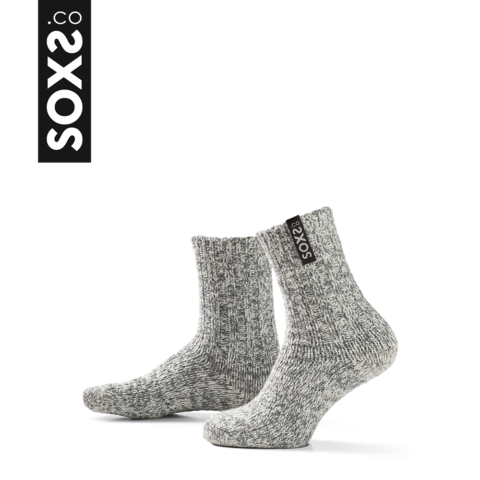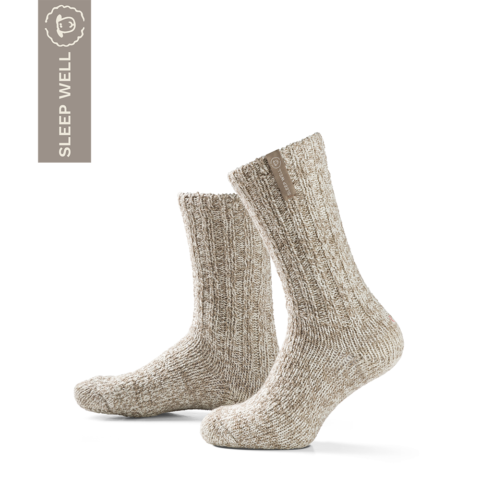Soft warm premium wool socks
Gift ready, stylishly packaged
Orders placed before 1:00 PM will be shipped today (on weekdays) PLEASE NOTE: The delivery time of Pimp My Soxs is 5 working days!
Wool socks offer more than just warmth during cold days. They actively support healthy blood circulation, keeping your feet comfortable throughout changing conditions. The natural properties of wool create an ideal environment for your feet, promoting good circulation while maintaining proper temperature balance.
Wool socks help enhance blood circulation by providing consistent warmth that gently dilates blood vessels. This improved blood flow is particularly valuable during colder months when your extremities need extra support to maintain proper circulation.
The natural breathability of wool ensures your feet stay at a comfortable temperature without overheating. This balanced environment prevents excessive sweating while maintaining warmth—creating ideal conditions for healthy blood flow. Our wool socks work with your body’s natural systems rather than against them.
Wool offers distinct advantages over cotton and synthetic materials when it comes to supporting healthy circulation. The breathable, moisture-wicking properties of wool help maintain consistent foot temperature, which is essential for proper blood flow.
Unlike cotton socks that retain moisture and can leave your feet cold and damp, wool efficiently moves moisture away from your skin. This keeps your feet dry and warm even during activity. Synthetic materials might offer breathability but typically can’t match wool’s natural insulation properties, especially in colder environments.
Health professionals often recommend wool socks for people with circulation-related conditions. The temperature-regulating properties of wool provide reliable warmth without causing overheating, making them suitable for those with sensitive circulatory systems.
Research suggests that wearing wool socks can help manage symptoms of circulation-related conditions by improving comfort and maintaining warmth. At SOXS, we develop our wool socks with these health benefits in mind, focusing on both performance and sustainable production methods.
Wool socks excel at keeping your feet warm during winter while supporting healthy circulation. The natural insulating qualities of wool prevent the common discomfort of cold feet that many people experience in colder weather. By maintaining proper foot temperature, wool socks help keep blood vessels appropriately dilated for better circulation.
The thermoregulating properties of our wool socks create an optimal environment for efficient blood flow. Wool’s unique fiber structure provides excellent insulation while effectively managing moisture, reducing circulation problems that often occur in cold conditions.
When selecting wool socks to support healthy circulation, consider both thickness and fit. Thicker socks provide more insulation for colder environments, while medium-thickness options work well for indoor wear or milder conditions.
The right fit is crucial—your socks should feel snug but never tight enough to restrict movement or blood flow. At SOXS, we use high-quality New Zealand sheep wool that’s both sustainable and comfortable against your skin. Our wool socks are designed to support proper circulation while maintaining our commitment to environmental responsibility.
Which activities would benefit most from the circulation support of our wool socks? Explore our full collection at soxs.co to find the perfect pair for your lifestyle.

Calf height

Calf height

Calf height